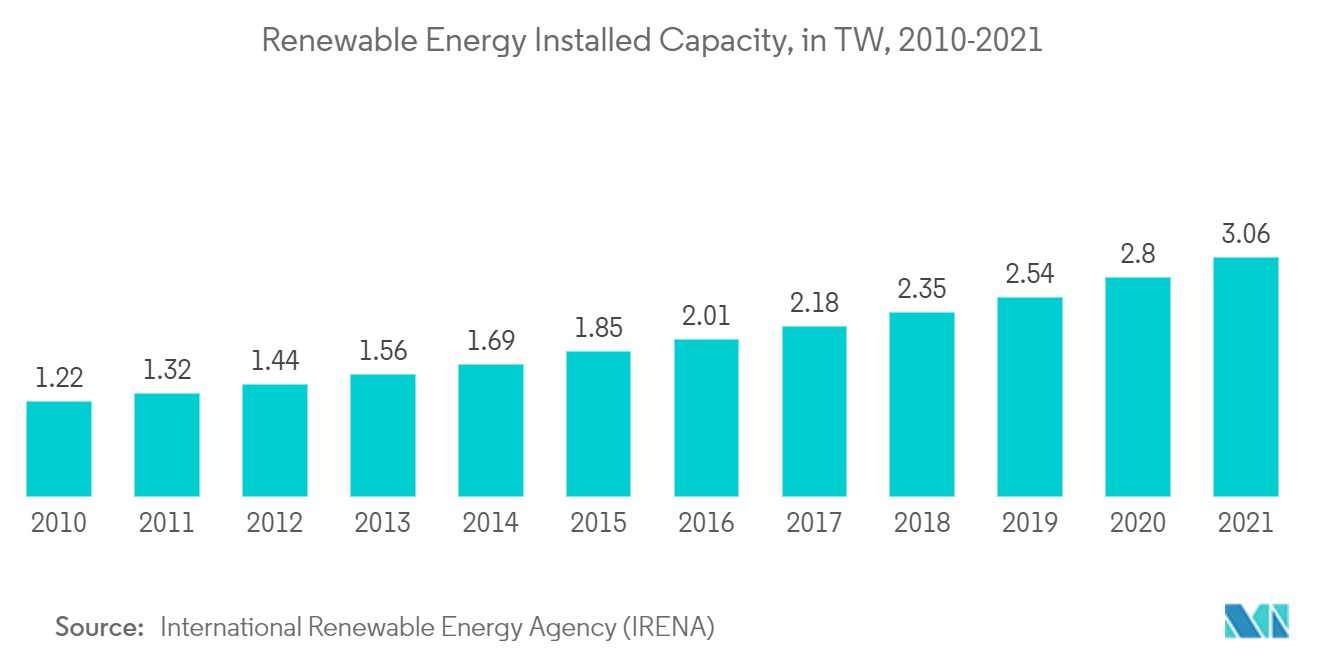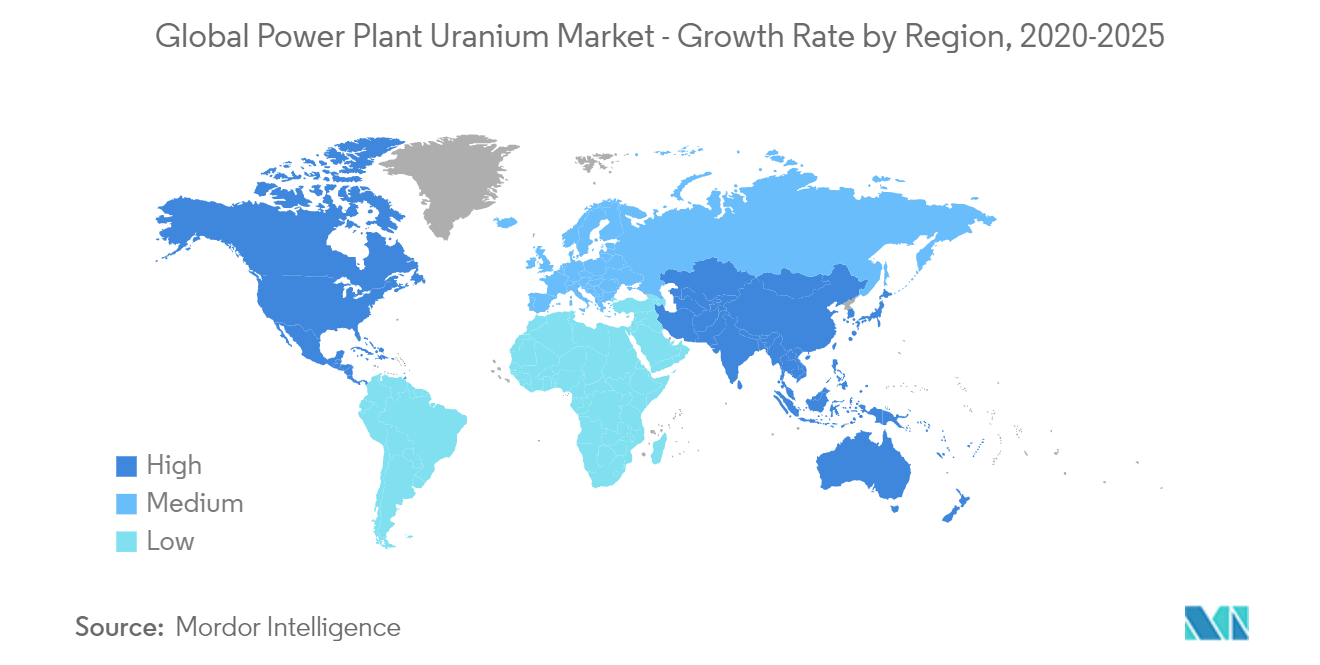Market Trends of Global Power Plant Uranium Industry
This section covers the major market trends shaping the Power Plant Uranium Market according to our research experts:
Renewable Energy Likely to Restraint the Market Growth
- There is an ongoing surge in the development of renewable energy around the world, striking out nuclear power globally. As a result, nuclear power generation increased by around a CAGR of 3.05%, where as renewable energy took a leap of around 15.25% CAGR during the period 1990 to 2020.
- As of 2021, the renewable installed capacity was nearly 3.06 terawatt (TW), increasing from 1.22 TW in 2010. Further, with upcoming renewable projects like Hornsea project 2 in the United Kingdom, Ulanqab wind farm in China, Triton Knoll in the United Kingdom, and several others are likely to increase renewable electricity during the upcoming years.
- The increase in renewable capacity can also be attributed to the fact that the simple and distributed technologies can be rolled out very quickly in comparison with very complex and large centralized nuclear power plants.
- Further, governments around the world have adopted various policies and schemes to adopt and utilize renewable energy in a massive scale. Net-metering schemes, tax rebates, subsidy for renewable utility projects are few major steps adopted by various regions around the world.
- Hence, with increasing adoption of renewable technologies on accounts of its advantages, nuclear energy industry is expected to have a challenging scenario, which would reduce the demand for uranium during the study period.

Asia-Pacific to be a Significant Region
- Asia-Pacific is one of the emerging regions in the world where electricity generating capacity and specifically nuclear power are growing significantly. In Asia, there are about 135-140 operable nuclear power reactors, out of which 30-35 are under construction, and counties planning to build an additional 50-60. Many more are proposed.
- The Chinese nuclear sector is expected to continue to expand at a robust rate, with capacity increasing by an annual average of 10.3% between 2018 and 2027, resulting in more than 95GW of installed nuclear capacity. This is in line with the aims of decarbonizing the country's baseload generation and to amass nuclear expertise for the export of technology.
- China is projected to be the second-largest nuclear market in the world, by capacity, in 2027, only marginally smaller than the leader, the United States. Although China's nuclear policy has undoubtedly been toned down in the aftermath of Fukushima, China remains the global frontrunner in terms of its nuclear ambitions. As of February, China has around 53 operable, 19 under construction, and 34 planned reactors.
- The Indian government is committed to grow its nuclear power capacity as part of its massive infrastructure development program. As of February 2022, India has 8 under-construction, and 12 planned reactors.
- Cumulatively, Asia has around 35 under-construction, and 50 planned reactors, which are likely to propel the market during the forecast period.


